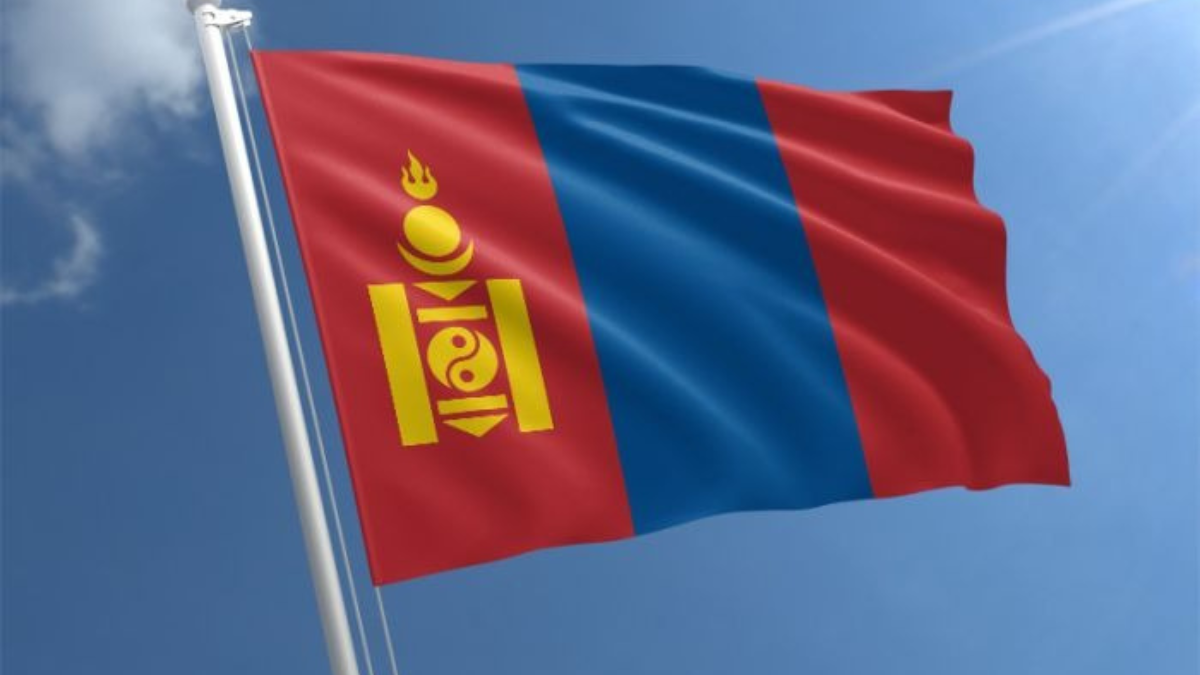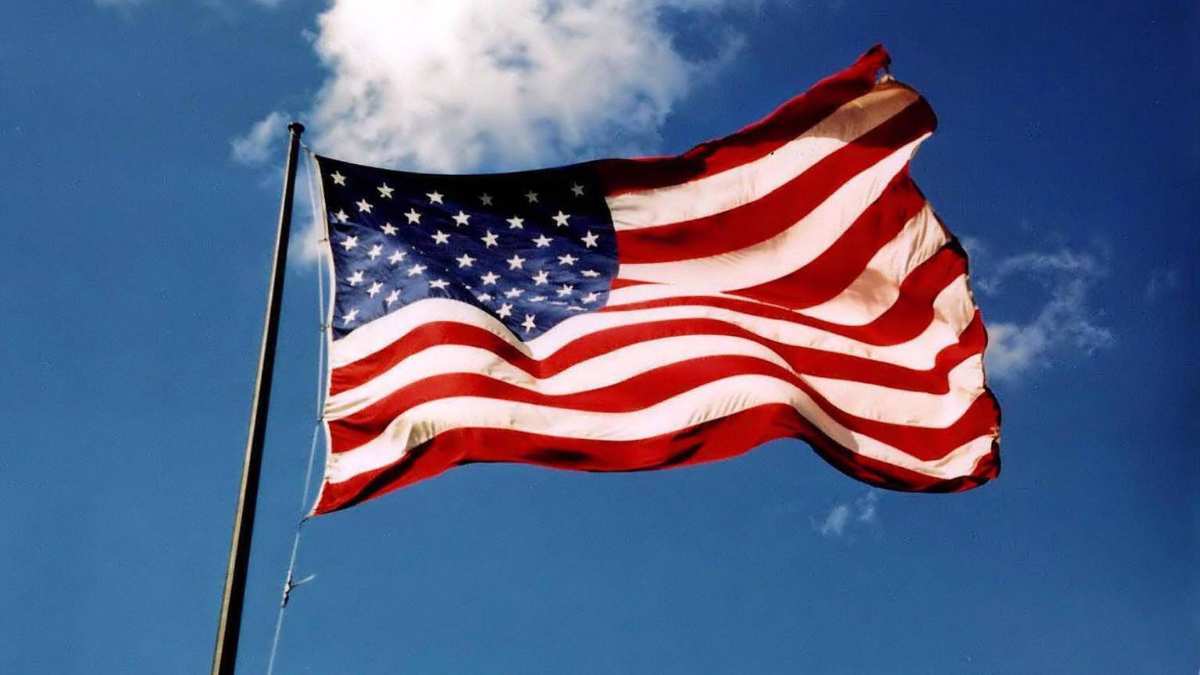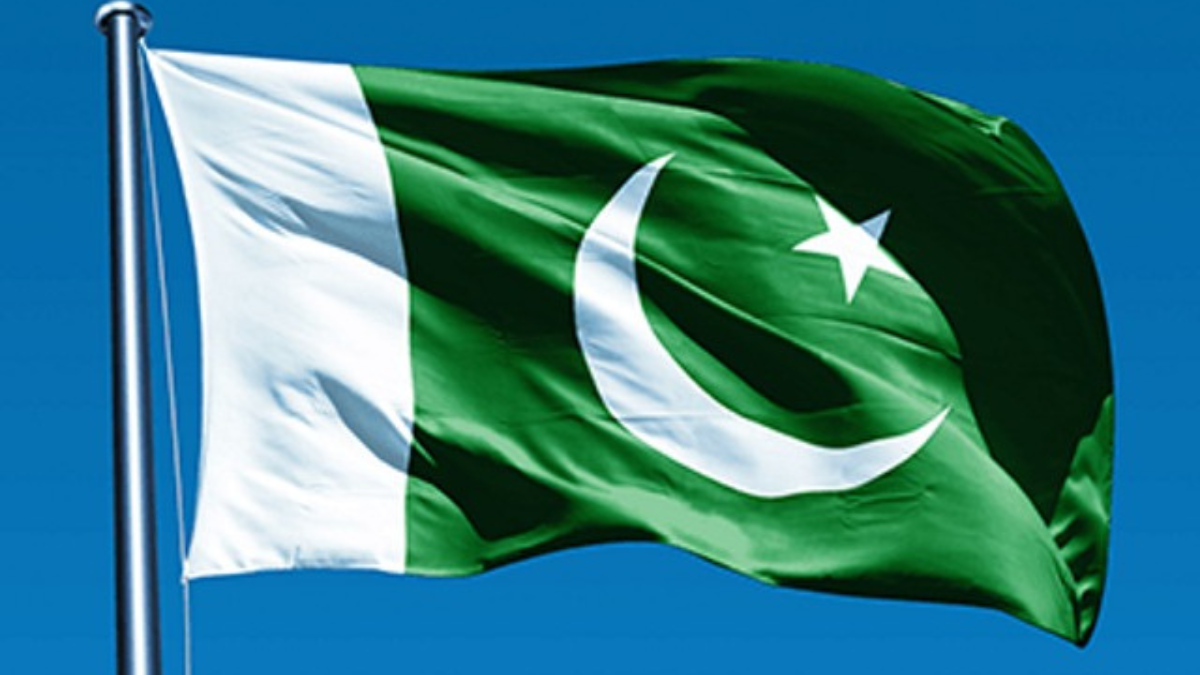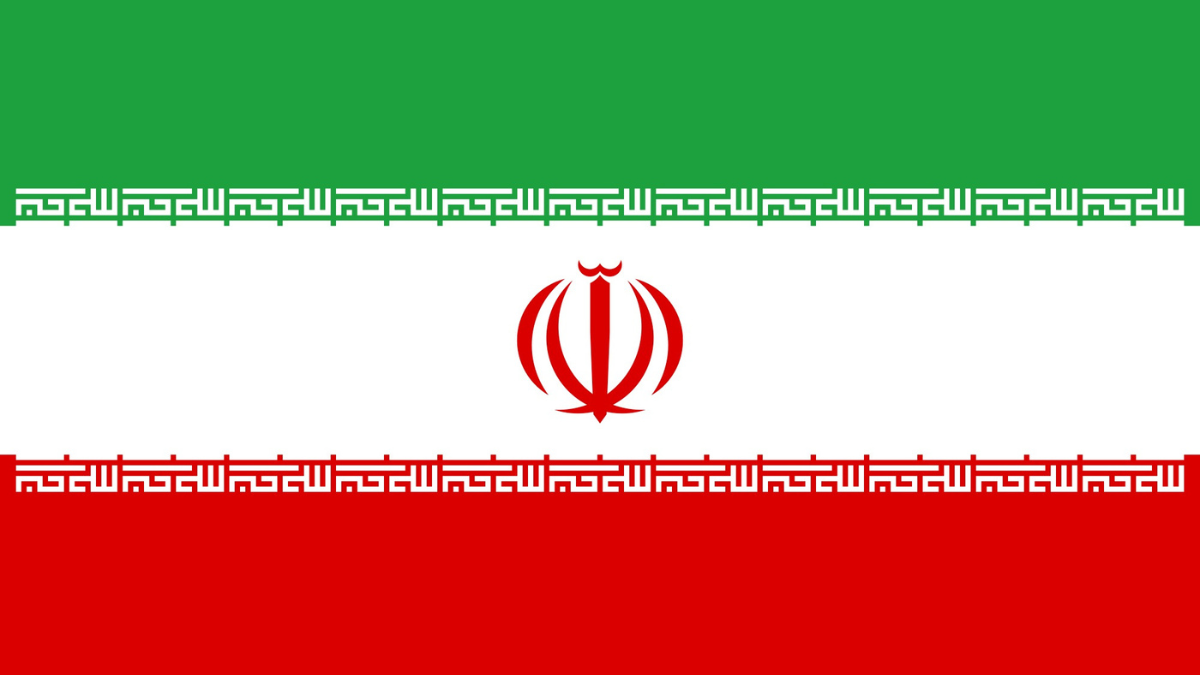FLAGS
Mongolia Flag: A Symbol of Rich Heritage and Identity

Flags have always been important symbols of a country’s history, culture, and goals, and they will always occupy a special place in its heart. The vibrant colors and complex symbolism of the Mongolian flag serve as a proud representation of the nation’s rich history and distinct character.
Origins and Evolution
The Mongolian flag’s historical journey reflects the nation’s historical development and spans the ages. It had a straightforward design at first, but as time went on, it changed, each version reflecting Mongolia’s changing landscape.
Symbolism of Colors
The flag’s eye-catching red and blue stripes draw attention right away. These hues, however, reach beyond into the meaning of Mongolian culture. The blue depicts the bright future that lies ahead, while the crimson symbolizes the country’s illustrious history.
The Soyombo Symbol: Heart of the Flag
The complex representation of several components, known as the Soyombo sign, lies at the center of the Mongolian flag. To understand the core of Mongolian identity, one must comprehend its symbols.
Evolution of Design
The Mongolian flag has undergone changes. Over time, the nation’s dynamic journey has been reflected in changes in design. Every modification conveys a tale, encapsulating the essence of the era and Mongolia’s changing character.
Beyond Borders: Global Recognition
The Mongolian flag proudly flies on the global stage, transcending the nation’s boundaries. Mongolia’s active engagement and contributions to the globe are symbolized by its representation in international events and conferences.
Importance in National Identity
The Mongolian flag is not just an international symbol; it is an important part of the country’s identity formation process. It gives Mongolians a sense of pride and unanimity and cultivates a sense of group consciousness.
Flag Etiquette and Cultural Significance
It’s crucial to comprehend how to handle and show the Mongolian flag correctly. Flag etiquette is a method for people to show their respect and reverence for their country’s emblem, not simply for protocol’s sake.
Public Perception
For the people of Mongolia, the flag is more than simply a piece of fabric—it’s a symbol of national identity. Knowing how the population feels about its flag might help one better understand the spirit of the country as a whole.
Notable Moments and Celebrations
The history of Mongolia has seen significant events represented by the flag. The flag has been an essential component of Mongolian history, from historical occurrences to Flag Day festivities.
DIY Crafts and Cultural Impact
Making small Mongolian flags via do-it-yourself (DIY) projects is not only a pleasant hobby but also a learning experience. A sense of attachment to the flag and its cultural importance is fostered by these actions.
Future Trends
There is expectation about prospective modifications to the Mongolia flag’s design as we move to the future. What function will the flag serve at next national gatherings? Time will tell, but one thing is for sure: the Mongolian flag will always stand for pride, cohesion, and the perseverance of the country.
Conclusion
In summary, the Mongolian flag is a live representation of the people of Mongolia’s tenacity and individuality, not just a piece of fabric. Its vivid hues and meaningful details weave together this unique country’s past, present, and future to convey a tale that transcends time.
FAQs
What do the red and blue colors on the Mongolia flag represent?
Mongolia’s future is represented by blue, and its past by red.
What is the significance of the Soyombo symbol on the Mongolia flag?
The fire, sun, moon, earth, and water are among the elements of Mongolian culture that are represented by the Soyombo sign.
Has the design of the Mongolia flag changed over the years?
Indeed, the flag’s design has changed to represent the country’s turbulent past.
Are there specific traditions associated with displaying the Mongolia flag?
Yes, showing respect for the national emblem may be achieved by following flag etiquette.
Where can I learn more about Mongolia’s Flag Day celebrations?
Go to official websites or websites belonging to the local community to find out what’s going on on Flag Day.

FLAGS
The Star-Spangled Banner: Unraveling the Symbolism of the US Flag

The American flag, often known as the Star-Spangled Banner, is more than just a piece of cloth; it represents resiliency, patriotism, and the rich history of the country. Examining its many components—from stripes to stars—we find a rich tapestry of symbolism that has influenced and mirrored the American identity.
Historical Evolution of the US Flag
The US flag’s voyage is evidence of the country’s development and resiliency. The flag’s progression, from its modest origins with 13 stars and stripes to its current 50-star design, represents the United States’ evolving history. The stars represent the original colonies.
Design Elements and Symbolism
Each component of the American flag has deep symbolic meaning. The nation’s defining beliefs and principles are communicated through the combination of the colors red, white, and blue, the stripes signifying the original colonies, and the stars, which represent the states.
Betsy Ross and the First Flag
Because she is credited with creating the nation’s first flag, the renowned Betsy Ross has a unique position in American history. Even though there are disagreements over the veracity of this narrative, it nevertheless forms a significant portion of the flag’s legend.
Changes Over Time: The 50-Star Flag
The adoption of the 50-star flag was a momentous occasion in the history of the country. Every additional star signifies a state, and the overall configuration reflects the togetherness of the states in the union.
Red, White, and Blue: Symbolic Colors
The US flag’s colors have great meaning behind them and are more than just a patriotic color scheme. White denotes innocence and purity, blue denotes alertness, persistence, and justice, while red denotes courage and valor.
The Stars: A Constellation of Unity
Unity is emphasized by the constellation-like arrangement of stars on the blue field. Each star stands for a state, creating an overall picture that symbolizes the power of unification.
The Stripes: Symbolism in Every Line
The founding colonies are represented by the 13 stripes on the US flag’s. They alternate between red and white, signifying each state’s uniqueness and togetherness.
Flag Etiquette: Respecting the Stars and Stripes
Maintaining the dignity of the US flag’s requires treating and displaying it properly. Flag etiquette guarantees that the flag’s meaning and symbolism be honored.
Patriotic Celebrations and Flag Day
During patriotic festivities, the US flag’s is prominently displayed, and Flag Day is a special day to recognize its importance. These instances act as potent reminders of the common identity and principles that the flag stands for.
Controversies and Debates
The US flag’s has been the subject of disputes throughout history, ranging from arguments over adding new stars to those about burning the flag in protest. These arguments demonstrate how difficult it may be to understand a sign that might imply different things to different people.
International Recognition
The US flag’s is a respected and well-known emblem in the world at large. The nation’s worldwide impact and ties are emphasized by its attendance at international events and institutions.
Cultural Impact
The US flag’s has an effect on popular culture, literature, and the arts in addition to formal occasions. It is a potent representation of the American identity that fosters patriotism and creativity.
Evolution in the Digital Age
The US flag’s finds new ways to be expressed in the digital era on social media and online. The flag’s online presence links Americans throughout the digital sphere and represents a contemporary kind of patriotism.
Educational Significance
The US flag’s is included into educational curricula as a sign of pride in the country. Future generations’ identities are significantly shaped by the historical and cultural importance of the flag that is taught in schools.
Conclusion
In conclusion, the Star-Spangled Banner is a living representation of the history, ideals, and cohesion of the United States, not just a flag. It is a beloved symbol that inspires and unites Americans of all ages due to its rich history, significance, and global awareness.
Frequently Asked Questions
Can the design of the US flag be changed?
It is quite improbable that the US flag would ever change in design since it would be a difficult procedure involving a constitutional amendment.
What does each star on the US flag represent?
The flag’s stars, which stand for each state individually, symbolize the unification of the states.
Why are there 13 stripes on the US flag?
The initial colonies that laid the groundwork for the United States are represented by the 13 stripes.
Is there a specific day to honor the US flag?
Yes, June 14th is Flag Day, a commemoration of the US flag’s and its historical importance.
How should citizens handle a worn-out US flag?
After courteous flag’s disposal rituals, which are frequently led by veteran groups, worn-out flags should be decommissioned appropriately.
FLAGS
Unveiling the Colors: Exploring the Flag of Pakistan

The flag of Pakistan is more than just a brightly colored cloth; it is a symbol of harmony, history, and cultural richness. As we unfold the layers of this iconic emblem, we discover a fascinating journey that reflects the nation’s evolution, values, and aspirations.
Historical Evolution of the Flag
There have been substantial changes to Pakistan’s flag from before independence to the current day. Comprehending these modifications offers an insight into the country’s intricate past and the ongoing development of its identity.
Design Elements and Symbolism
Examining the flag’s intricate design in detail reveals a deliberate choice of colors and symbols, each having profound cultural and historical meaning. The crescent, the star, and the green and white colors all have important roles to play in forming the story of the flag.
Creation and Adoption
The design of the flag was an important step in fortifying Pakistan’s identity, not only an artistic achievement. Understanding the events leading up to its creation and the formal adoption procedure enables us to recognize the momentous occasion that gave rise to this national emblem.
Green and White: Dominant Colors Explained
The flag’s primary colors, green and white, were not chosen at random. They are deeply symbolic of the country’s agricultural wealth, cultural legacy, and aspiration for world peace. Gaining an understanding of the meaning associated with these colors enhances our gratitude for their incorporation into the flag.
The Crescent and the Star: Iconic Symbols
The flag’s crescent and star, which represent advancement, hope, and unification, stand triumphantly at the front. The beliefs and goals of Pakistan may be understood by dissecting the symbols’ origins and how they are represented in the country.
Flag Etiquette and Protocol
The value of the flag goes beyond its design; holding and displaying the national flag with grace and dignity is crucial. The dignity and respect that are connected with this insignia are upheld by citizens who follow the rules.
Patriotic Celebrations and Flag Day
The flag is the focal point of patriotic festivities during national occasions. The idea of a dedicated Flag Day also acts as a reminder of the nation’s history and the lasting sense of solidarity.
Controversies and Debates
Similar to every other national emblem, there have been disagreements and arguments around the flag. Examining these examples sheds light on the various viewpoints that surround the symbol and suggests ideas for future modifications.
International Recognition
Pakistan’s flag is significant internationally in a number of areas. Its attendance at international gatherings and organizations fosters diplomatic relations and embodies national pride while symbolizing the nation’s position on the world scene.
Cultural Impact
The flag has a profound impact on popular culture, literature, and the arts in addition to formal rituals. Its ability to bring disparate populations together behind a single emblem emphasizes the cultural influence it has on the country.
Evolution in the Digital Age
The flag has discovered a new medium for representation in the digital era. Social media is essential for disseminating material about the flag and encouraging the younger generation to have a feeling of patriotism.
Educational Significance
The younger generation’s sense of national identity is shaped in part by the flag’s prominence in school curricula. Their education begins to revolve on their comprehension of the flag’s cultural and historical importance.
Future Prospects and Changes
Symbols of national identity are subject to change along with society. It is interesting to speculate about how the flag may evolve in the future to reflect modern ideals while maintaining its historical significance.
Conclusion
In conclusion, the Pakistani flag is a dynamic symbol that captures the country’s history, ideals, and future goals rather than just being a reflection of it. Our relationship with this potent symbol of unification is strengthened when we comprehend the historical, cultural, and metaphorical meanings of the flag.
Frequently Asked Questions
Can the design of the flag be changed?
Flag design is an important national issue that has to be well thought out. Any changes would need a rigorous procedure.
Why is green such a prominent color on the flag?
In Flag of Pakistan Green is a representation of Pakistan’s cultural legacy and represents the country’s agricultural wealth.
What is the significance of the crescent and star?
The star denotes optimism and national unification, while the crescent signifies development.
Is there a specific day dedicated to the national flag?
Yes, to respect the flag and its significance to the history of the country, Pakistan has a dedicated Flag Day.
How can citizens contribute to flag-related celebrations?
In addition to adhering to flag etiquette and actively participating in patriotic activities, citizens should raise awareness of the flag’s significance.
FLAGS
Iran Flag: A Tapestry of History and Identity

Flags have always represented a nation’s identity, pride, and history; they are more than just pieces of cloth. Among these, the Iranian flag is a potent representation of the country’s pride and historical significance.
Introduction
Within the rainbow of national flags, the Iran flag unfolds a centuries-long narrative. The goal of this essay is to examine the intricate design, historical background, and cultural significance of the Iranian flag in order to shed light on its rich tapestry.
Historical Context
Origin and Evolution
The Iran flag has profound historical origins and has developed alongside the nation. It was first modeled after ancient Persian symbols and then changed throughout time to reflect changes in Iran’s governmental system.
Key Design Elements
The colors and symbols used in the flag’s design are tastefully combined, and each has a deep symbolic significance. One of the main features, the symbol, represents the ideals and goals of the country.
Colors of the Iran Flag
Symbolic Palette
The red, white, and green tricolor scheme is more than just a design choice. White denotes honesty and peace, red denotes bravery and valor, and green stands for development and optimism.
Color Symbolism
Every color on the flag has a deep symbolic meaning that connects Iran’s past and present. Gaining an understanding of these hues enhances one’s enjoyment of the visual language of the flag.
Design Features
The Emblem’s Significance
The main emblem, which has symbolic components and a stylized script, is a microcosm of Iran’s identity. Examining its specifics reveals a story that is deeper than meets the eye.
Unique Patterns and Symbols
The flag may have distinctive patterns or symbols in addition to the insignia. These frequently depict historical occurrences or cultural themes, which deepen the flag’s story.
Evolution Over Time
Changes in Design
The Iran flag has experienced modifications, much like any other historical relic. These changes frequently mirror the nation’s changing political landscape and evolving sense of national identity.
Historical Influences
It is essential to comprehend the events causing these shifts. The evolution of the flag has been profoundly impacted by political reforms, wars, and revolutions.
National Pride and Identity
Role in Fostering Pride
The flag is a great source of pride for the country, not just a symbol. It is essential to investigate its function in cultivating a feeling of identity and solidarity among Iranians.
Reflecting Iran’s Identity
The colors, designs, and emblem of the flag act as a mirror, reflecting the core of Iranian identity. Analyzing these components provides a window into the spirit of the country.
Protocol and Etiquette
Proper Display
Respect is owed to flags, thus it’s crucial to know the correct ways to fly the Iran flag. Knowing when and how to hoist and lower the flag is a badge of honor in places of government and education alike.
Occasions for Display
The flag has significance on many occasions, from national celebrations to times of togetherness and solidarity; its use is not restricted to formal occasions.
Influence on Culture
Impact on Art and Culture
The Iranian flag is present throughout art and culture, not just in formal contexts. Its impact is evident in everything from literature to art, influencing Iranian culture’s story and aesthetic.
Integration in Everyday Life
The flag is a seamless part of everyday life, transcending art. It acts as a continual reminder of national identity on everything from apparel to home goods.
Global Recognition
International Perspectives
The flag of Iran is an internationally recognized emblem. Investigating how other countries view and engage with the Iran flag offers valuable insights into international diplomatic relations.
Presence in International Events
The flag’s prominence on the world scene is demonstrated by its attendance in international gatherings, such as diplomatic summits and sporting events.
Controversies Surrounding the Flag
Historical Controversies
There are many historical disputes about flags. A more complex knowledge of the history of Iran may be gained by looking at any arguments or disagreements around the Iranian flag.
Different Perspectives
One-sided disputes are uncommon. Various viewpoints on these issues are presented in order to create a complete picture.
Popular Culture References
In Media and Arts
The Iranian flag is still prevalent in popular culture. Examining its representations in literature, music, and film illuminates its influence on cultures throughout the world.
Cultural Significance
The flag’s wider cultural importance becomes apparent when one examines how it is displayed and interpreted in other cultural contexts.
Iran Flag Merchandise
Commercialization
The flag is a commercial symbol that isn’t limited to flagpoles. Analyzing the Iran flag’s commercialization in a range of items shows how much of an impact it has.
Popular Items
Numerous things are adorned with the flag’s design, ranging from clothes to accessories. Gaining knowledge about these products’ popularity allows one to understand public opinion.
Educational Importance
Use in Schools
As a physical symbol of our history and core beliefs, the flag is essential to education. Understanding its effect on future generations requires analyzing its role in schools.
Promoting National History
The flag brings a country’s past to life. It is crucial to evaluate the ways in which the flag is used in educational settings to promote national history.
Social Media Impact
Online Presence
Through social media, the flag increases its visibility in the digital era. Analyzing its influence on social media sites such as Instagram and Twitter offers insights on current discussions.
Role in Online Movements
A common emblem in internet movements is the flag. Examining the Iran flag’s place in numerous internet debates and movements demonstrates how dynamic it is.
Future Prospects
Potential Changes
Flags change as nations do. Examining prospective modifications or advancements to the Iran flag design offers insight into the nation’s future course.
Evolving Role
The role of Iran’s flag changes as the country develops. The investigation finishes with predictions about future changes and adaptations that the flag could undergo.
Conclusion
The Iran flag is essentially a living memorial to the country’s historical journey rather than just a piece of cloth. Every Iranian may relate to the tale the flag weaves, from its historical evolution to its modern meaning.
FAQs
What do the colors of the Iran flag symbolize?
Green is a sign of development, white of serenity, and red of bravery and heroism.
How has the Iran flag evolved over the years?
The flag has changed to reflect changes in politics and the development of the national identity.
What controversies are associated with the Iran flag?
Discussions about iconic symbols and design modifications are examples of historical conflicts.
Is the Iran flag prominently featured in popular culture?
Indeed, it may be found in films, music, and literature, demonstrating its widespread cultural relevance.
How does the Iran flag influence education?
Schools use the flag as a teaching tool to impart national ideals and history.
-

 TECNOLOGY9 months ago
TECNOLOGY9 months agoTech4SEO: Optimizing SEO Performance with Tech
-

 FASHION9 months ago
FASHION9 months agoWarm Sweaters: Embracing Cozy Style in Chilly Weather
-

 FASHION9 months ago
FASHION9 months agoLeather Pants for Men: Unveiling the Timeless Trend
-

 CRYPTO8 months ago
CRYPTO8 months agoExploring Staxum Crypto: A Comprehensive Guide
-

 FASHION9 months ago
FASHION9 months agoBridal Jewellery: Adorning Love and Tradition
-

 GAMES9 months ago
GAMES9 months agoThe Gameboy Color: A Journey Through Nostalgia
-

 INFORMATION9 months ago
INFORMATION9 months agoCindovies Unveiled: A Culinary and Cultural Journey
-

 INFORMATION9 months ago
INFORMATION9 months agoWaterways Journal Magazine: Navigating World of Water Transport